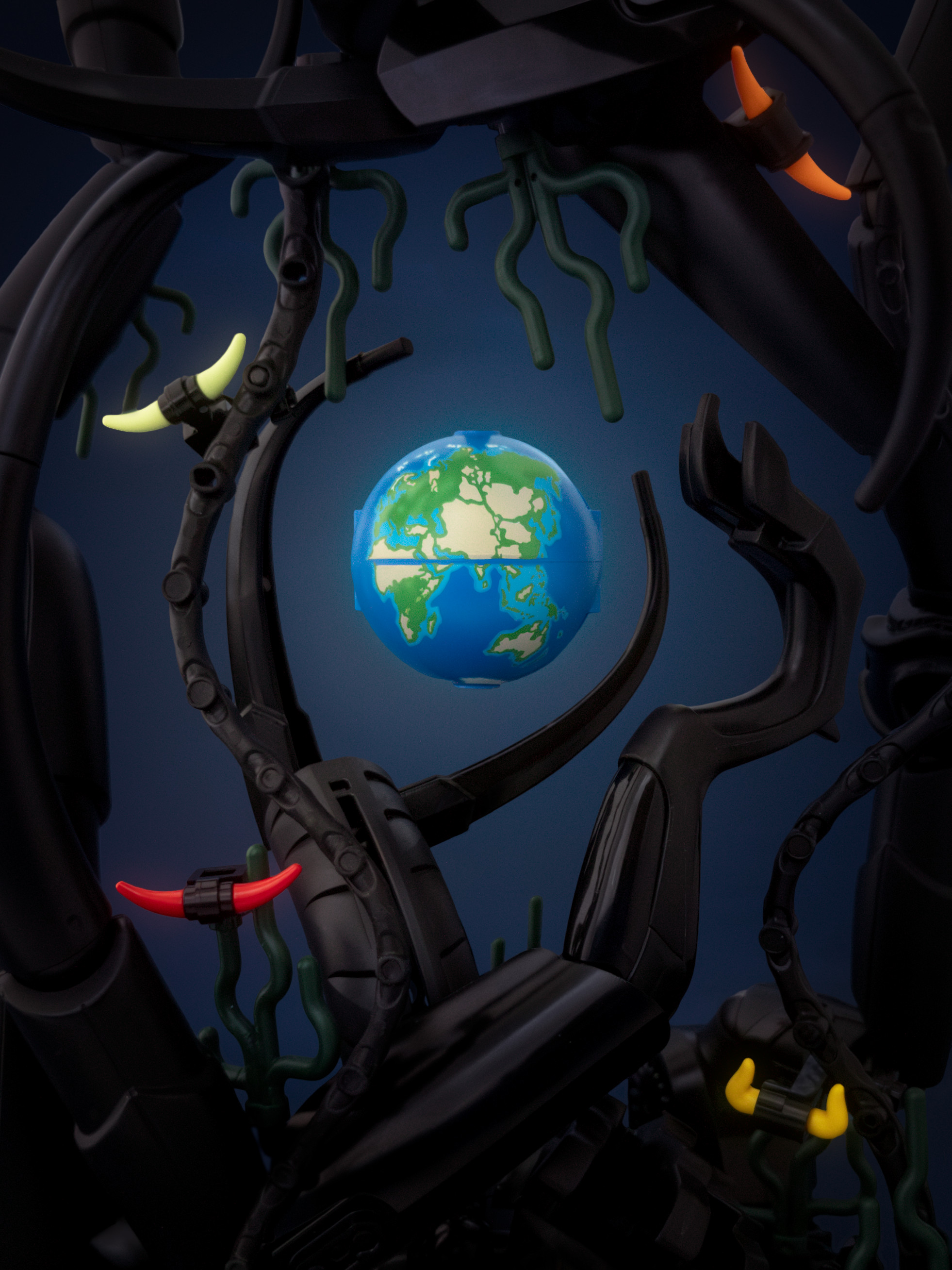
Earth, in the dark forest
Published
Brief
The fourth round RogueOlympics theme was “backwards”/“rückwärts.” This has a lot of potential for dynamic or abstract takes.
Concepts and research
My first ideas related to backwards movement—time flowing backwards as a character moves. But lots of large-scale actions like walking, waving, or bowing can be performed forward or backward and would be hard to distinguish if reversed. Compare that to other events like iron rusting, water dripping, or glass breaking, where the flow of time has a clear backwards and forwards direction through the process.
Signaling reversed time would be challenging with character actions, even more so when frozen in a single static image. I had some good chats with others about the puzzle of how to represent movement happening backwards, but I couldn’t find a satisfying answer. Maybe another time…
But I had also just finished the Three-Body trilogy by Liu Cixin, and I was left thinking about some of the ideas in the final book, Death’s End. The series describes a dark forest universe, one where “every civilization is an armed hunter stalking through the trees like a ghost, gently pushing aside branches that block the path and trying to tread without sound.”
Variations of the dark forest concept have existed since the 1970s or 80s, proposed as answers to the Fermi paradox or “great silence”—the observation that advanced alien life is statistically likely yet makes no signals that we have observed (source: Quarterly Journal of the Royal Astronomical Society). It’s an unsettling concept, and paints intergalactic civilization as backwards and barbaric—even more so if given the advanced planet- and star-destroying weapons described in the series.
But if that’s bad, then some of the dark forest “solutions” from the series are even worse, and it’s some of these ideas that made this concept come to mind when I saw this week’s theme:
Self-mutilation plans…advocated humanity to retreat from the space age and the information age and found a low-technology society—perhaps a society reliant on electricity and the internal combustion engine, such as at the end of the nineteenth century, or even an agrarian society.
—Liu Cixin, Death’s End
And even more bizarre possibilities are suggested:
Show minor spoilers for Death’s End
These include more aggressive and inhumane self-mutilation via drugs or other techniques to lower human intelligence (except for those worthy of leadership…of course), or manipulating the laws of nature to reduce the speed of light around the solar system to seal it into a “black domain” where not even light could escape but civilization could continue in peace.
I was drawn toward exploring these concepts in Lego form, feeling that they could be tied into backward-ness in different ways. I made some thumbnail sketches to play with different ways of representing ideas from the books, settling on an abstract scene of tendrils and eyes to represent the eerie, stifling atmosphere of the dark forest itself.
Build
This build was fairly straightforward, supported by a Technic stand that I could slide groups of tendril-like elements onto. This kind of building feels like painting with bricks—I find it to be very natural when working with Technic and constraction pieces.
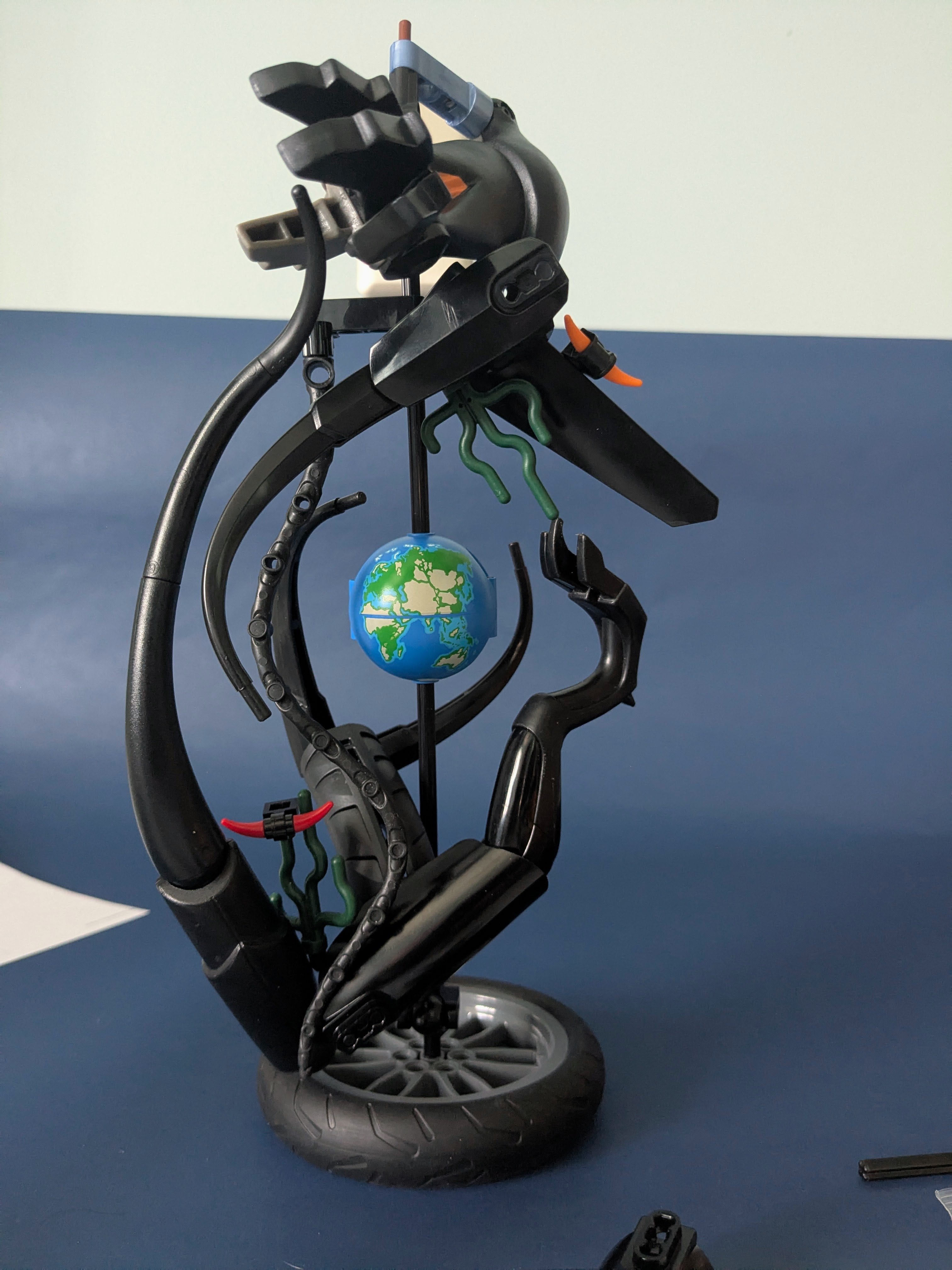
The last time I’d tried something similar, I didn’t start with a central frame. That had made it much more difficult to connect the segments I’d built and ensure that they’d look good through the camera, not just to my eyes’ perspective.
A few sections of this build were somewhat fragile, so the weight of new additions would shift the alignment of the fiddly tendrils. I redesigned the supports of some of these sections as I worked—an occasional annoyance when I had to slide other modules out of the way to reach the parts in the middle of the long axle.
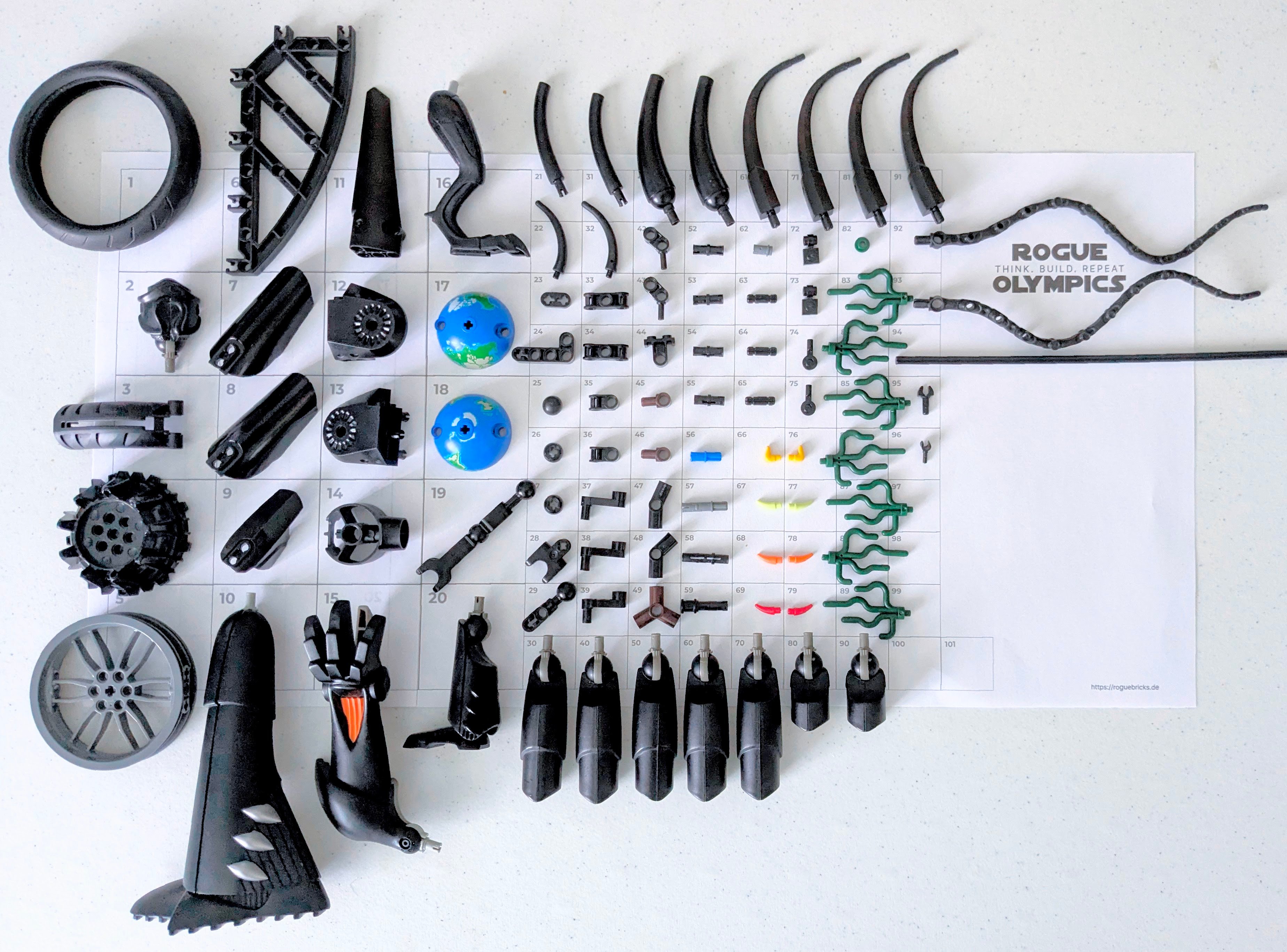
Presentation
Like a lot of my recent work, I added a gradient overlay over the background to give me more control over the tone of the image without losing the paper texture completely. In this case, this also meant erasing the stand with the clone stamp and content-aware fill tool.
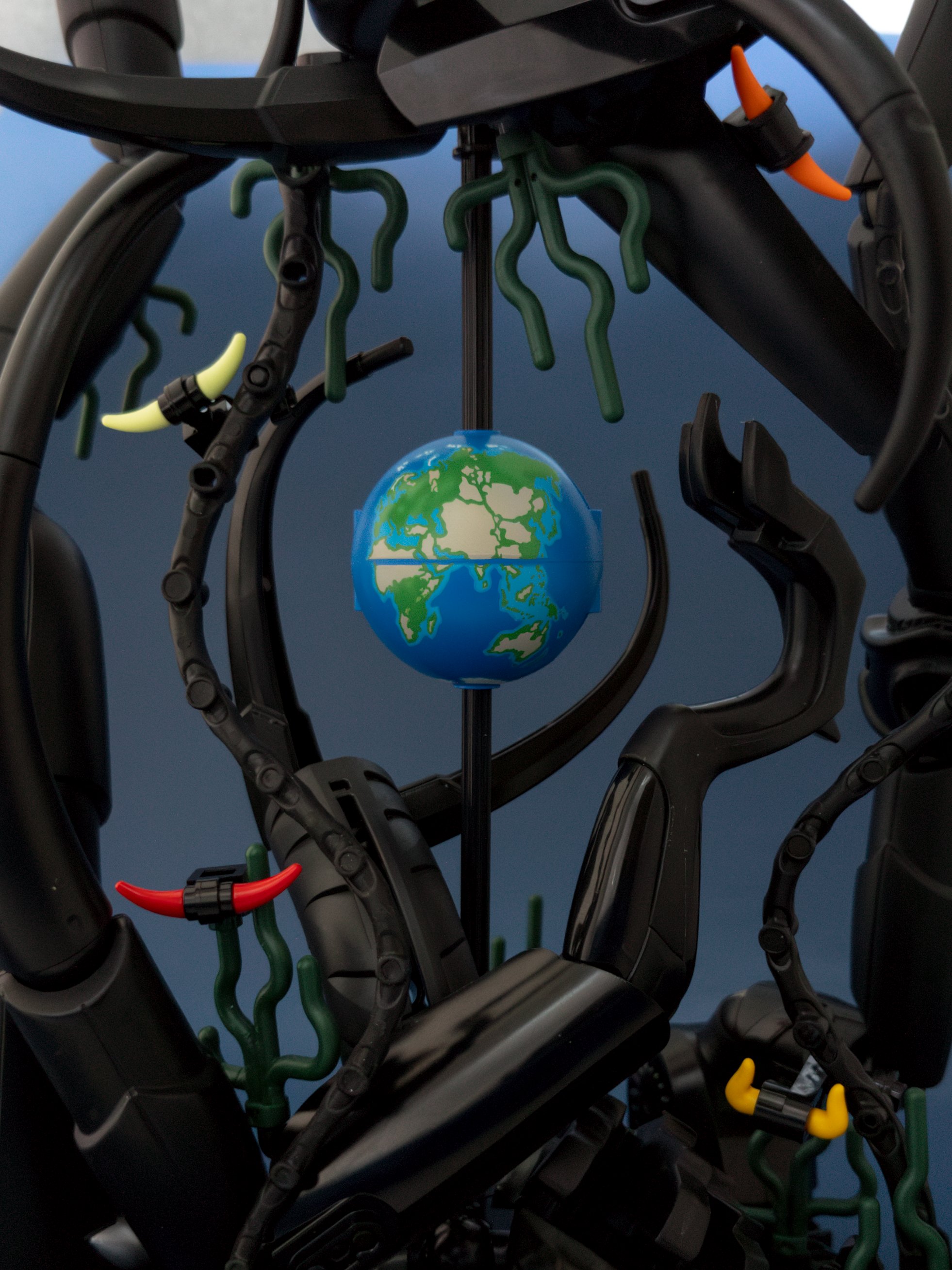
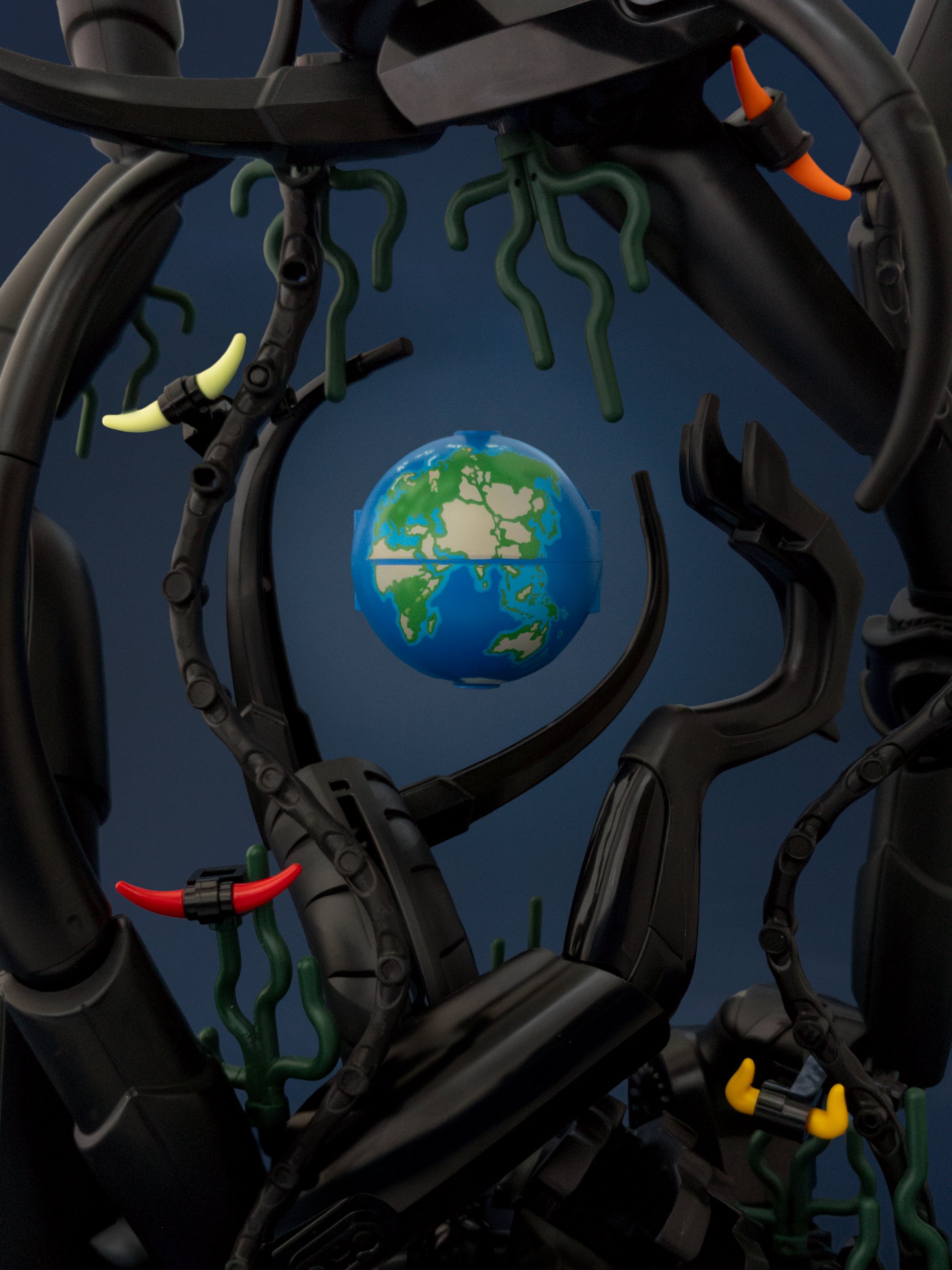
I find this is a nice middle ground between just color-correcting a photo with a paper backdrop and doing a full cutout edit. It’s easier to get a natural look this way than trying to redraw a background from scratch while still allowing you to add color or effects like stars or haze.
Reflections
For a more abstract, impressionistic build, it feels appropriate that the edit is so essential to the final product.The final layer of lighting effects on the eyes and globe really bring the scene to life. The process was akin to making a collage or working in another visual medium.
But more than that, I particularly enjoyed building something connected to my other interests. I need to remember that Lego can be used to express “big ides” just like any other medium, even if I want this hobby to fill other roles for me as well.
What I learned:
- Use a stand for “painting with bricks” but watch the weight distribution.
- Find more opportunities to combine my interests!